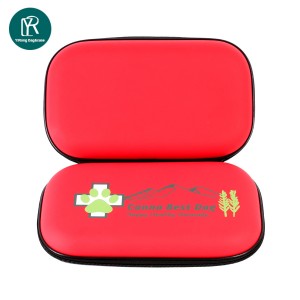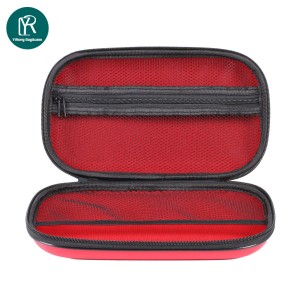How to choose the size of an EVA first aid kit based on the frequency of use?
When choosing an EVA first aid kit, it is crucial to consider the frequency of use and the scenario of use. Here are some suggestions and reasons for choosing the size of the first aid kit based on different usage scenarios (home, outdoor, travel, etc.):
Home First Aid Kit
Recommended size: A medium-sized first aid kit or box.
Reason:
Comprehensiveness: A home first aid kit needs to contain items for dealing with a variety of common minor injuries, such as burns, cuts, abrasions, sprains, etc.
Storage space: Families usually have fixed living members, so you can prepare a first aid kit with enough medical supplies.
Easy to access: It should be placed in an easily accessible place at home, such as a cabinet in the kitchen or living room.
Child safety: If there are children at home, choose a first aid kit with a safety lock to prevent children from accidentally ingesting medicines.
Long-term use: The home first aid kit should be checked and updated regularly to ensure that all items are within the validity period.
Example: A typical home first aid kit may include disinfectant, Band-Aids, gauze, bandages, medical tape, scissors, tweezers, painkillers, antihistamines, etc.
Outdoor First Aid Kit
Recommended size: Small to medium-sized, easy-to-carry first aid kit.
Reason:
Portability: When doing outdoor activities, the first aid kit needs to be lightweight and easy to carry.
Targeted: Choose a first aid kit containing specific first aid supplies according to the type of outdoor activities, such as hiking, camping, rock climbing, etc.
Durability: Outdoor first aid kits should be waterproof and shockproof and able to adapt to harsh outdoor environments.
Emergency treatment: Contains items for dealing with emergencies such as abrasions, fracture fixation, heavy bleeding, etc.
Personalization: Add necessary personal medicines according to personal health conditions and specific needs.
Example: Outdoor first aid kits may include Band-Aids, disinfectant wipes, elastic bandages, emergency blankets, tourniquets, multi-purpose knives, whistles, flashlights, etc.
Travel First Aid Kit
Recommended size: Small, easy to put in a suitcase or backpack.
Reasons:
Compactness: Space is limited when traveling, and the first aid kit should be small and not take up too much space.
Versatility: Include items to deal with common travel-related injuries and illnesses, such as motion sickness, diarrhea, sunburn, etc.
International standards: If traveling internationally, consider carrying medicines and supplies that meet the medical standards of the destination country.
Language preparation: Prepare some instruction cards for medicines and supplies, translated into the language of the destination country.
Insurance information: Include travel insurance information and emergency contact information.
Example: A travel first aid kit may include band-aids, disinfectant wipes, pain relievers, antihistamines, motion sickness medicine, rehydration salts, sunscreen, insect repellent, etc.
Summary
When choosing an EVA first aid kit, the size should be determined based on the frequency of use and the scenario in which it will be used. A home first aid kit should be comprehensive and easy to access, an outdoor first aid kit should be portable and durable, and a travel first aid kit should be compact and versatile. In each scenario, the contents of the first aid kit should be customized according to the emergency situation that may be encountered to ensure that timely and effective first aid measures can be provided when needed. Regularly check and update the contents of your first aid kit to ensure that all supplies are within their expiration dates so that they can be used in an emergency.
Post time: Apr-14-2025






